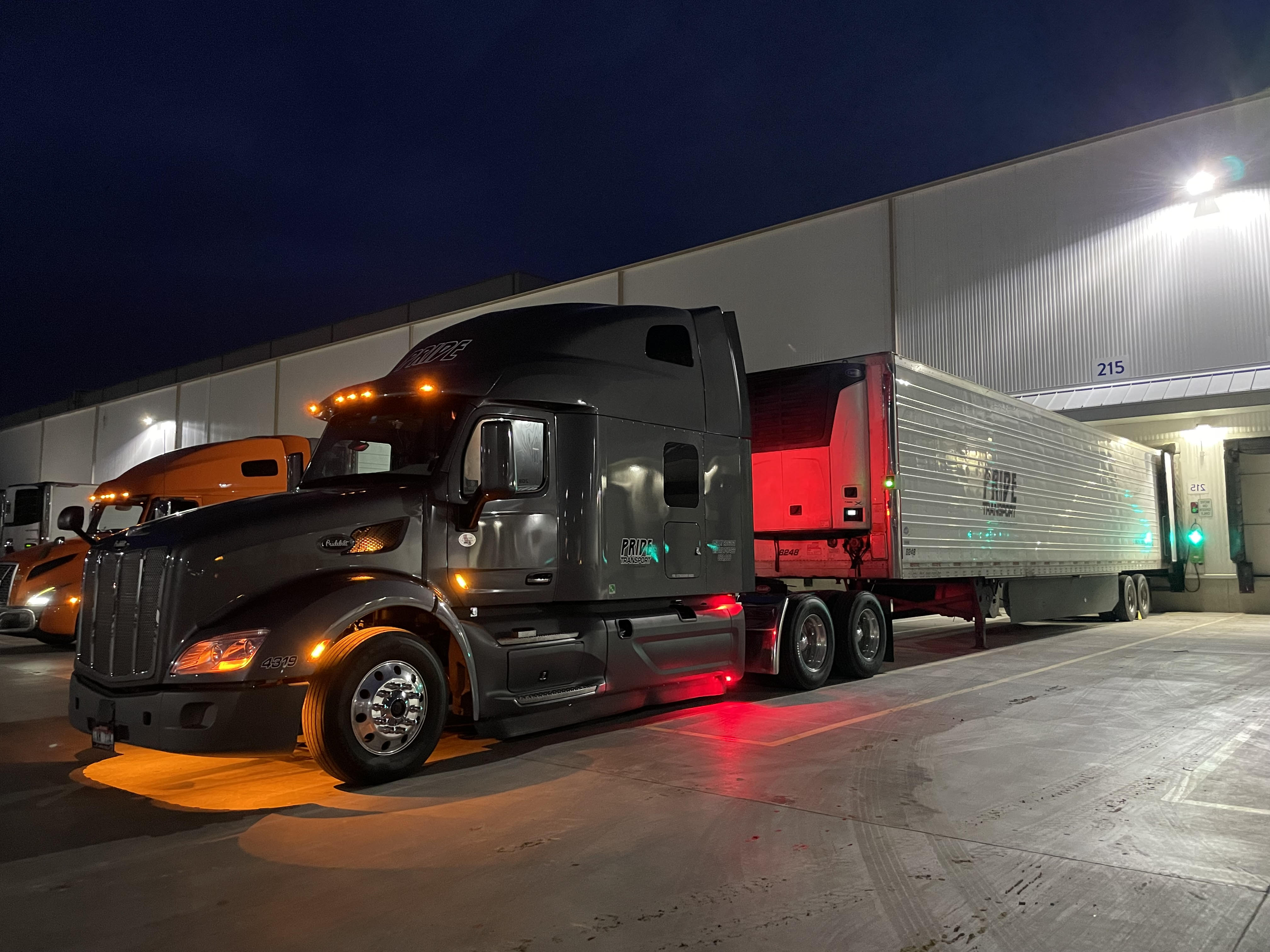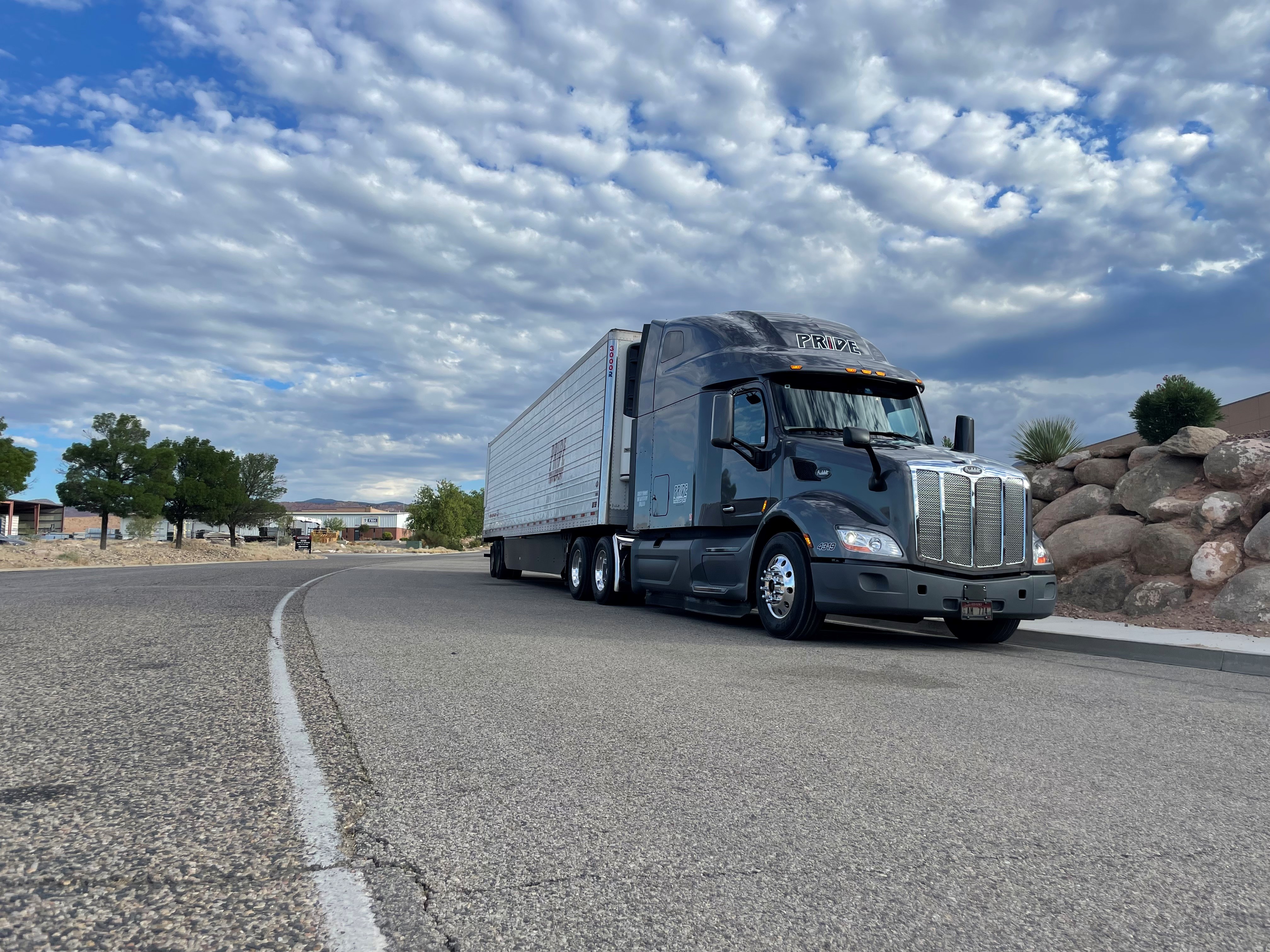by Pride Transport | Sep 26, 2024
Backing up a semi-truck is one of the most difficult things to learn to do in the industry. Semi-trucks are hard to back up for several reasons, including the length of the trailer, the articulation point, and low driver visibility.
Despite how tricky it can be to learn to back up a semi correctly, it is a necessary skill. You will need to back your semi-truck up for multiple reasons, including if you want to back into a loading dock or bay and if you need to get in and out of a narrow delivery area. You should also be aware that you may need to back up your truck at truck stops or when getting gas as well.
Why Is Backing Up a Semi-Truck Difficult?
Being able to back up a semi is an important skill, but it is difficult because of several factors.
Backing up is complicated by the length of the trailer, with longer trailers being harder to maneuver. Backing up is also difficult because you’ll have limited visibility (and blind spots get worse with larger trailers). Finally, with an articulation point behind your cab, there can be delays in the time it takes for the trailer to turn after you make an adjustment. Each of these challenges is further complicated by the frustration and stress that come with driving a large truck. But don’t worry — each of these problems have a solution.
The Physical Challenges of Backing Up a Semi-Truck
There are several physical challenges to backing up a semi.
- The average length of a trailer is 53 feet long. The longer a trailer gets, the more difficult it will become to control. Additionally, how long the trailer is can lead to obscured vision and minor delays during turns, which can throw off the alignment of a turn.
- The articulation point can lead to confusion. The articulation point results in the trailer turning the same way as the wheel. For example, if you turn your wheel to the right, the trailer will move to the right. If you’re not cautious, backing too quickly and not considering the angle can lead to jackknifing.
- The visibility from the truck cabin is limited. You will need to deal with multiple blind spots. Using mirrors, a backup camera, and even guidance from people outside the vehicle might be necessary.
The Mental and Psychological Challenges of Backing Up a Semi-Truck
The physical challenges of backing a large truck are pronounced, but they can be made worse because of the mental and psychological challenges of doing so. Fortunately, you can overcome those challenges and become more confident in your backing skills.
Common mental and psychological challenges include time constraints and feeling rushed, anxiety about backing up incorrectly, and pressure to perform (particularly when you’re new to the industry). To get past these challenges, take a deep breath and stay focused. Rather than feeling pressured to rush, take your time, and ask for help if you need it. Talk to your peers and mentors if you need additional practice and support — you’ll build confidence as you get more experience.

Why You Must Master Backing Up a Semi-Truck
It’s necessary to master backing up your truck to ensure you can finish your routes, safely dock, and keep yourself and those around you safe.
You will need to master backing up your vehicle to correctly dock your trailer when you arrive at your destination. Trucking docks might be in narrow delivery areas, so knowing how to control the trailer as you back in is essential.
And, if you have to deliver items on narrow streets or within tight parking lots, knowing how to back into the space will ensure you can get back out of the area without complications.
Finally, don’t forget that you’ll have to come and go from places like rest stops and truck stops. If you master backing up, you’ll be fine even if someone blocks an exit in front of you or you have to maneuver to get around other vehicles.
Helpful Tips for Backing Up a Semi-Truck
At first, learning how to back up your truck correctly can feel overwhelming. Here are five tips to help you do so more easily:
- Use your mirrors. Since your visibility may be obscured, using your mirrors is the key to seeing both sides of the trailer. If you have a backing camera, keep an eye on it as well.
- Keep adjustments gradual. Any major turns of the wheel will cause more dramatic movements by the trailer. Avoid sudden movements to prevent the trailer from going off-course.
- Use a spotter. Sometimes, it can be very helpful to have a spotter guide you as you back into a dock or parking space. A spotter is particularly useful in tight or cramped spaces.
- Use the right technology. The nice thing about driving a truck today is the amount of technology you have at your disposal. Don’t forget to take advantage of technology like Google Maps to learn about the destination before you get there and to make a plan for your approach. You can also use a backup camera and other tech to ensure you are in alignment before pulling into tight spaces.
- Go slow. While you might feel like you’re pressed for time or being pressured to pull in quickly, the reality is that everyone (including your employer, spotters, or people working on a dock) puts safety first. It is much better to take two or three minutes longer to dock than to rush and end up causing a crash. Just focus on what you need to do to perform the maneuver correctly. Speed comes with practice.
By using these tips and getting enough practice, you’ll position yourself to be a better driver and make your job easier.
Get Behind the Wheel With Pride
Backing up a large truck has its complexities, but if you take your time, practice, and follow the simple tips in this article, you’ll be on your way to becoming a better driver and overcoming the challenges of backing up and parking.
Ready to get on the road as a truck driver? At Pride Transport, we have CDL job openings now. Visit our website to learn more about driving with Pride.
